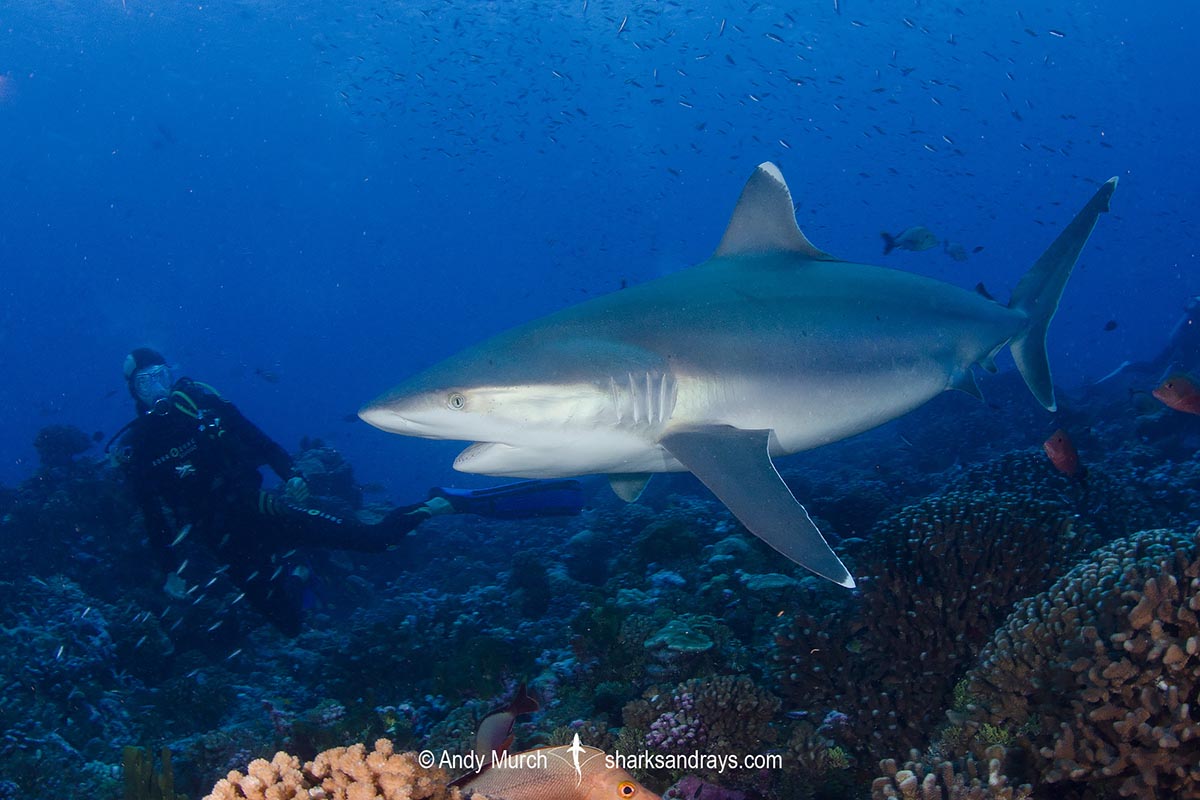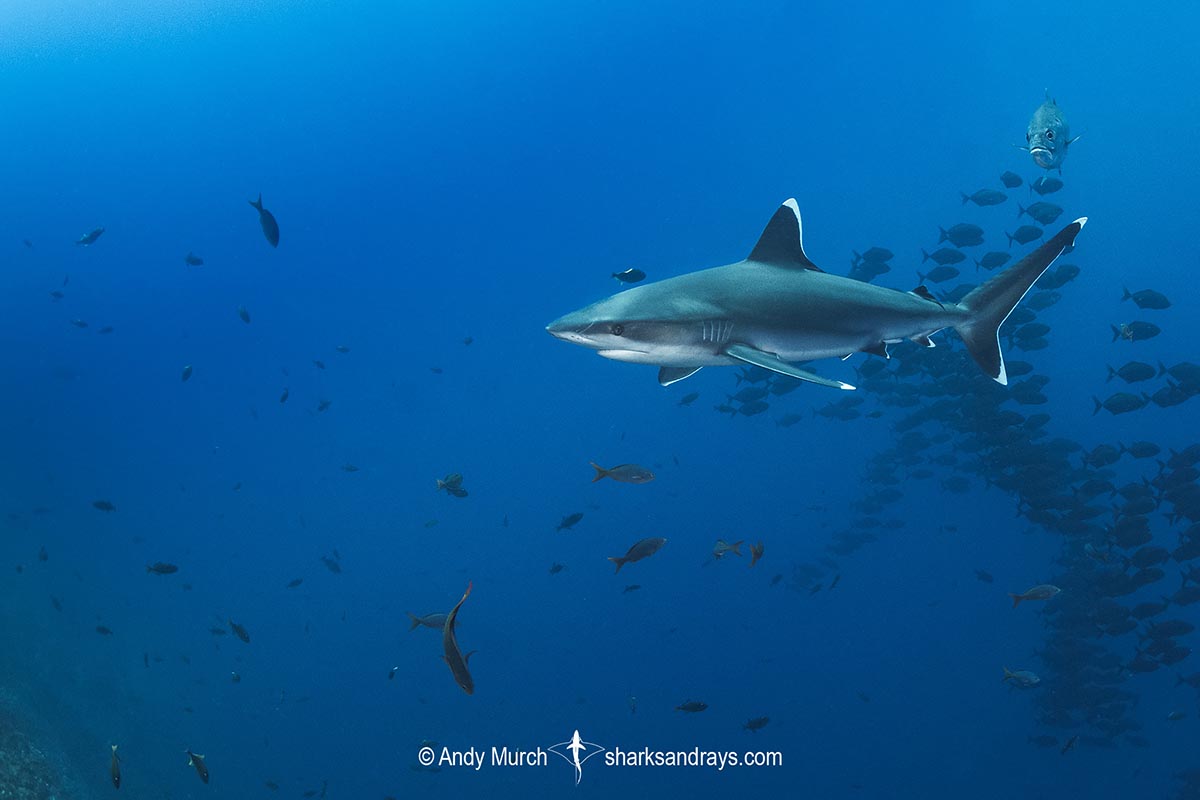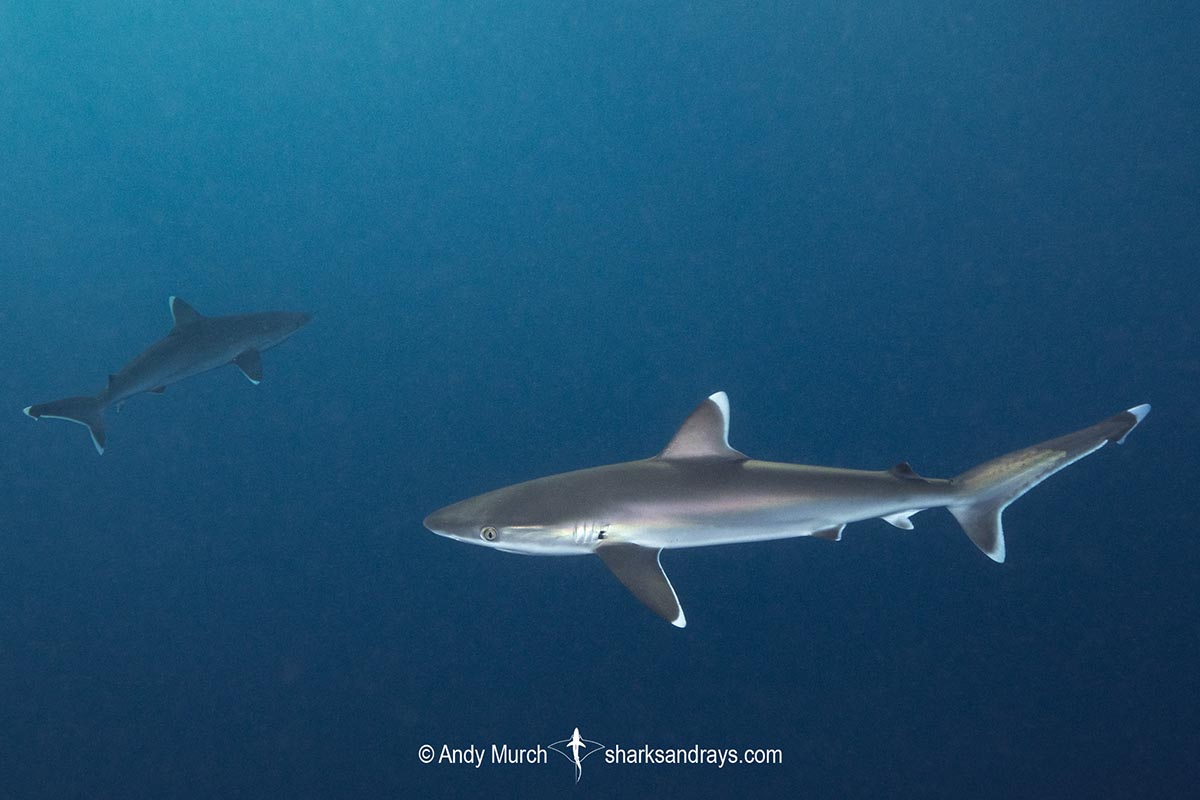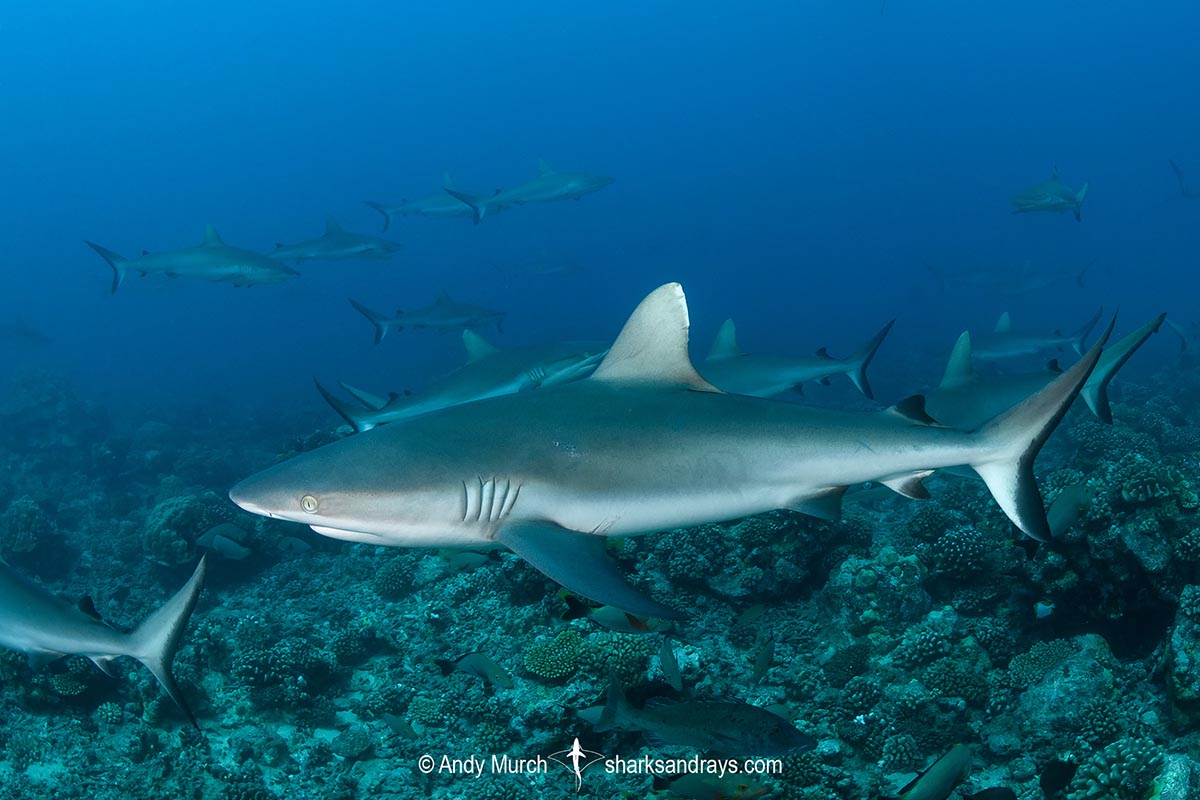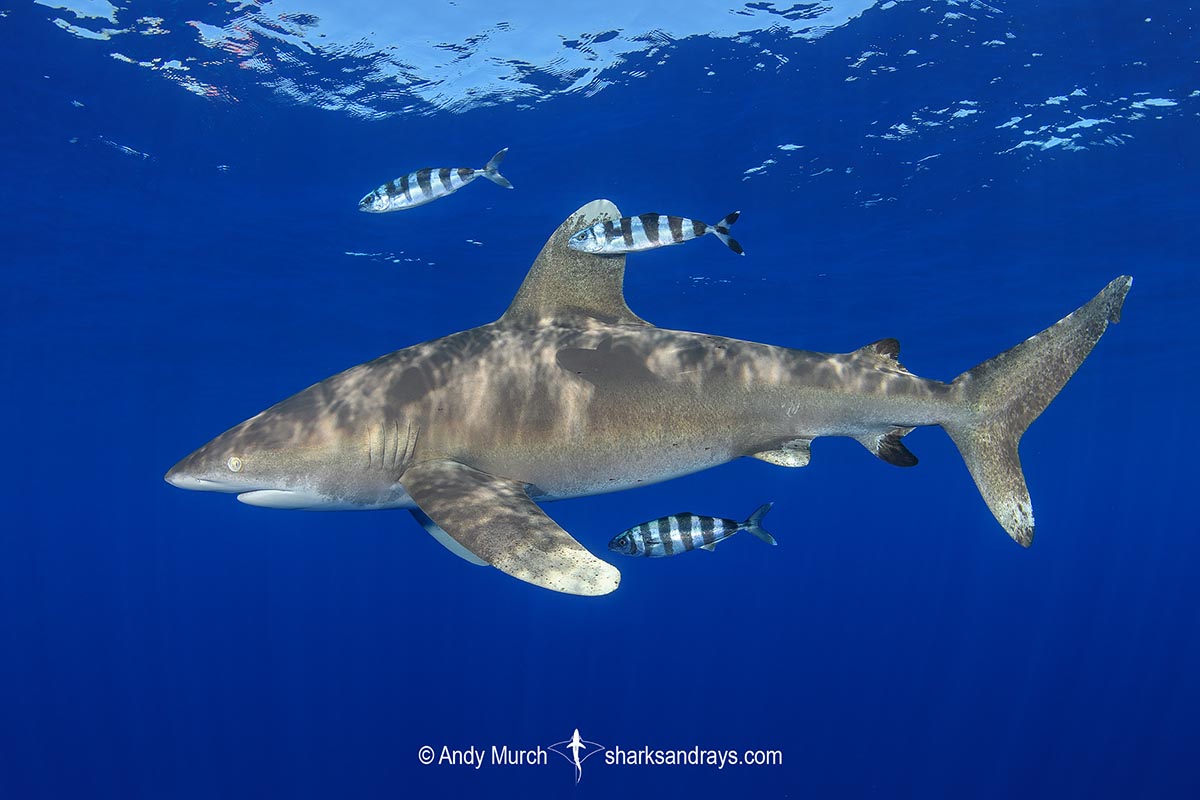Common names
Silvertip Shark.
Binomial
Carcharhinus albimarginatus.
Synonyms
Carcharhinus platyrhynchus, Carcharias albimarginatus, Carcharinus albimarginatus, Eulamia albimarginata, Eulamia platyrhynchus.
Identification
All fins (except second dorsal) have brilliant-white tips and posterior margins. Second dorsal small with black or dusky tip. First dorsal origin level with, or slightly anterior to free rear tip of pectoral fin. Second dorsal origin level with anal fin origin. Pectoral fins mildly falcate with pointed tips. Low interdorsal ridge present. Dorsal coloration coloration grey/brown; often with a bronzy sheen. Pelvic, anal, and caudal fins somewhat dusky (before white margin).
Size
Maximum length 275cm (Specimen recorded by Fourmanior in 1961). Size at maturity approx 160-199cm. Size at birth 63-80cm.
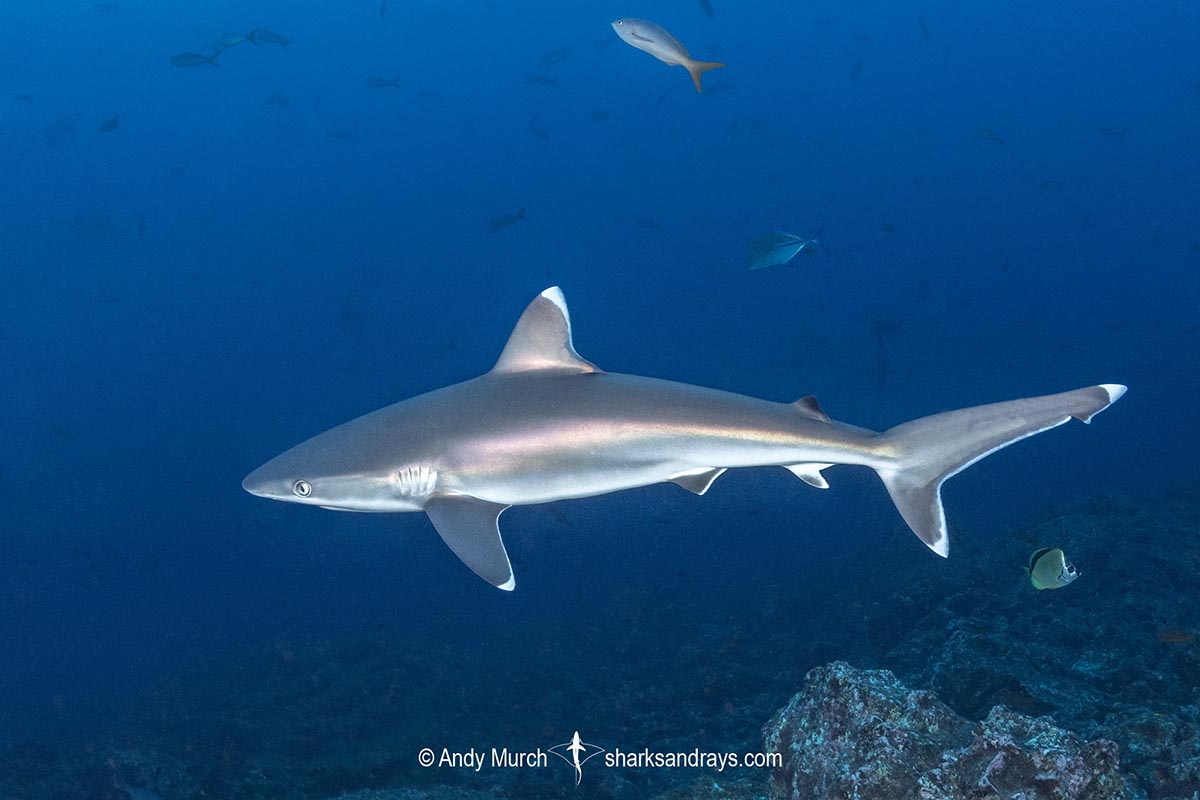
Conservation Status
VULNERABLE
Throughout their range, Silvertip Sharks are caught as bycatch and retained for its meat and fins in open ocean fisheries and in artisanal longline, gillnet, and trawl fisheries. In Indonesia and PNG Silvertip Shark populations have declined drastically. Indonesian shark fishing boats targeted silvertips so heavily during the early 1990s, that shark fishing vessels in that region have become relatively uncommon.
In the Indian Ocean, silvertips and other reef sharks declined by more than 90% between 1970 and 2006. The only area where silvertips are still relatively abundant is in parts of Australia.
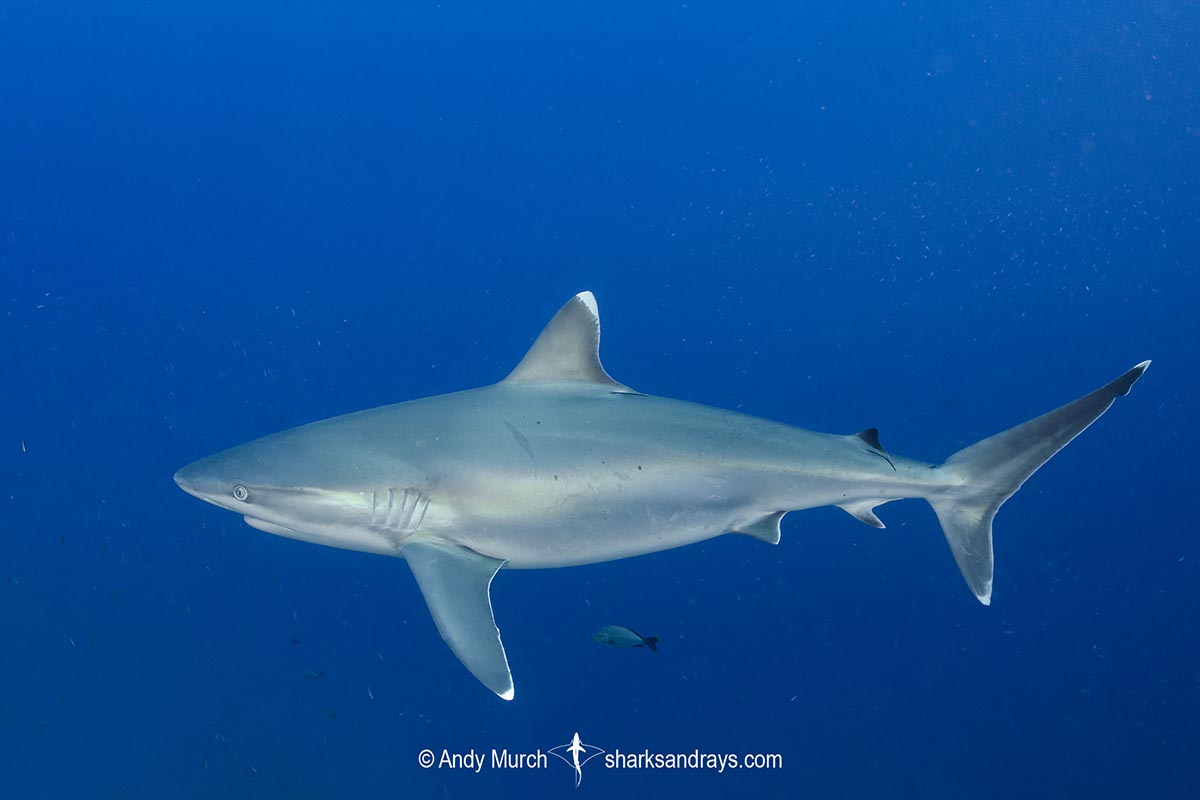
Habitat
A warm water species inhabiting coral and rocky reefs, offshore islands and seamounts. Will also enter coastal lagoons. Present from the surface to at least 600m.
Distribution
The silvertip shark is wide ranging throughout the tropical Indo-Pacific but not completely cosmopolitan. It is noticeably absent from the Red Sea and the Hawaiian Islands, among other places.
Reproduction
A viviparous species with yolk-sac placenta. 1-11 pups per litter. In the Mauritius-Sechelles area, birthing takes place in December or January after a gestation period of roughly 1 year.
Nurseries probably exist at many offshore islands where it occurs. At the Revillagigedo Archipelago (Socorro), small juveniles are often spotted at cleaning stations.
Diet
Diet consists of midwater and demersal bony fishes, small sharks, eagle rays, and cephalopods (octopuses).
Behavior
Cruises deeper reefs and drop-offs where schooling fish gather. Silvertip sharks are frequently sighted hunting amoung clouds of jacks and butterfish at Roca Partida (Socorro).
Considered an aggressive predator that dominates over similarly sized co-species such as Galapagos sharks and blacktip sharks where they occur.
Reaction to divers
Relatively easy to approach at some locations where resident silvertips are conditioned to seeing divers. Extremely bold and potentially aggressive in baited situations.
Diving logistics
In the Eastern Pacific, silvertip sharks can be encountered at most of the popular offshore archipelagos and islands. Due to their distance from the mainland, all must be visited by liveaboard dive boat.
At the Revillagigedo Archipelago in Mexico, juvenile silvertips are virtually always found at a dive site called The Canyon off of San Benedicto Island. Whereas, larger animals are regularly spotted at Roca Partida.
At Cocos Island in Costa Rica, silvertips are sporadically encountered on some deep wall dives. There used to be a particularly good spot for them at a cleaning station called Silverado but I have heard that they have moved off, and that particular dive site is now a better spot for tiger sharks (this needs confirmation).
Malpelo Island off of Panama also has random sightings. As do the current swept northern Galapagos dive sites at Wolf and Darwin.
In French Polynesia, silvertips are very common in the Tuamotu Archipelago. Divers often see them mixed in with the large aggregations of grey reef sharks that aggregate in the passes leading in and out of the atolls.
At the south pass of Fakarava, you are likely to see 400+ sharks on a good dive, of which maybe 5% are silvertips.
Rangiroa has similar passes but with smaller quantities of sharks. I once did a baited silvertip dive there, but chumming has since been banned across all of FP.
Back in the mid 1990’s, I visited Silvertip Bank in Myanmar. Even back then, the reef had been almost completely destroyed by dynamite fishing. There were very few fishes to be seen but we still managed to chum in a pair of large silvertip sharks. The sharks were extremely aggressive, repeatedly bumping our small group of divers, long after the bait had been consumed. Considering how easy it is to see this species at relatively close quarters in Pacific Mexico, French Polynesia, and elsewhere, the use of bait is clearly not necessary to encounter this species.
Similar species
Grey Reef Shark This similarly shaped species sometimes has an identical white margin on its first dorsal fin but none of its other finned are white-tipped.
Oceanic Whitetip Shark Although this species possesses white-tipped fins like the silvertip shark, it’s dappled countershading, and large spatulate pectoral fins looks significantly different.

